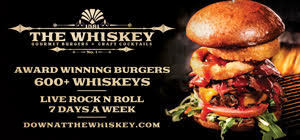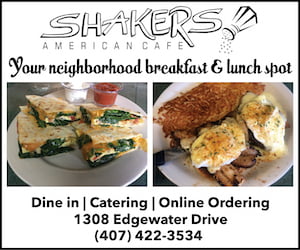 The restaurant world is all abuzz today with the recent review in the New York Times of the much celebrated restaurant Per Se, published in today’s print edition and online here.
The restaurant world is all abuzz today with the recent review in the New York Times of the much celebrated restaurant Per Se, published in today’s print edition and online here.
In his review, Times critic Pete Wells notes several instances over his several recent visits that were not consistent with a four-star restaurant, which was Per Se’s previous rating. Wells reduced it to two stars, a rating that, it should be noted, would be cause for celebration by hundreds of New York restaurants were they to be reviewed by the paper. According to a key that runs with the reviews, “Ratings range from zero to four stars. Zero is poor, fair or satisfactory. One star, good. Two stars, very good. Three stars, excellent. Four stars, extraordinary.” So even with the demotion, Per Se is rated “very good.” But once you’ve been extraordinary… And it’s rare that a rating drops two full stars. Even Ruth Reichl in her famous demotion of Le Cirque, which came primarily from her treatment while in disguise, only dropped the rating from four to three.
But what amused me most about today’s review is that many of the itmes that Wells notes in his article are things I pointed out in my review of Per Se — in 2006. Even then, while New Yorkers were still panting breathlessly about the new restaurant from the owner of California’s French Laundry and falling all over themselves to get a reservation, I saw an emperor with no clothing. Yes, I thought it was very good, but it was not extraordinary. And the service, well… here, I’ll let you read it.
This review originally was published in the March 5, 2006, edition of the Orlando Sentinel
By Scott Joseph
When chef Thomas Keller announced he would open a restaurant in New York’s Time Warner Center, people kept asking him if it would be like his wildly popular French Laundry restaurant in Napa Valley. And he kept giving them the same answer: Not per se. He apparently said it enough times that the words started to grow on him. And that’s how the restaurant came to be called Per Se.
It opened in mid February of 2004 but a fire six days later forced it to close until May of that year. Since then it has become one of New York’s most celebrated, most coveted and most expensive restaurants.
“I can’t believe you got a reservation to Per Se,” said a friend of mine. “Mere mortals can’t, you know.” It is a pretty tough table to book. In mentioning a celebrity sighting at the restaurant in the New York Times’ “Boldface” column, Campbell Robertson wrote of Per Se, “… it’s already too late to get reservations, though you can try to squeeze in your grandchildren.”
Keller, 49, is arguably one of this country’s top chefs. He was named America’s best chef by Time magazine in 2001 and is the only cook to win consecutive best chef awards from the James Beard Foundation. Per Se is one of only four restaurants – along with Le Bernardin, Alain Ducasse and Jean-Georges – to achieve the highest ranking of three stars in Michelin Guide’s first compilation of New York dining.
The restaurant is on the fourth level of the Time Warner Center at Columbus Circle in what is essentially – let’s be honest here – a shopping mall, albeit one with windows overlooking Central Park. With only 16 tables in a terraced room designed by Adam Tihany, Per Se offers diners a commanding view of the park and, most unfortunate for those seated closest to the windows, the glaring neon that surrounds the refurbished Columbus Circle below.
At the entrance to the restaurant is a blue door fashioned after the one on the French Laundry in Yountville, Calif. This is not, however, how you enter the restaurant. Instead, as you tug to no avail on the large round doorknob a glass panel on the side slides open. It’s designed either as a bit of whimsy or to make you feel foolish.
The dining room is expansive enough to allow plenty of space between tables. The décor, appointed with polished wood and metal with attention paid to lighting, whether on the arrangements of red hibiscuses and yellow roses on each table or the waving wood sculptures on the walls, is understated opulence. White linens cover the tables and drape to the floor, and each table has a hurricane lamp with candle.
There is a fireplace in the center of the tall windows that was filled with candles, too. Why, I wondered, on a cold New York winter’s night not a real fire? It doesn’t work, the waiter said, and no one seems to know how to fix it.
And, one wonders why a designer with a veritable blank stage would fashion an intimate room where two tables would be seated next to a waiters station, one on either side of the room. That’s where my guest and I sat.
Menus are written daily and offer seven to nine courses, though portions are somewhat small so that, as our lead waiter said, you end up eating the same as at a “normal” restaurant. There are actually three menus each night: a regular menu, a tasting of seasonal vegetables, or the chef’s tasting menu. The first two are priced at $210 per person and the tasting menu is $325. The price includes service, although nowhere does it state how much is meal and how much is service. Tax and beverages are extra.
My guest and I stayed with the meat-based main menu. After an amuse bouche of salmon served in a tiny ice cream cone presented in a highly polished silver holder, we began our dining adventure with oysters and pearls, featuring a sabayon of tapioca on an Island Creek oyster topped with Russian Sevruga caviar. The dish has become something of a signature for Keller, who says that in the 10 years he’s been serving it he’s never once tasted it. Not sure why, but he’s missing something.
The second course presented the only choice on the table d’hote: either the roasted heirloom squash or moulard duck terrine de foie gras, which came with a $30 supplement. I went with the squash, which, with crispy sage leaves, chestnut coulis and brown butter aioli, was overproduced.
The foie gras, on the other hand, was elegantly lush and ethereal, accompanied by mulled spice-scented quince jam, Marcona almond crumble, flowering quince relish and frisee lettuce.
The next two courses were devoted to the sea, first a small fillet of Atlantic black bass then a Nova Scotia lobster “cuit sous vide,” or cooked under vacuum, a trendy process these days. The fish had citrus, globe artichokes and Nicoise olives to complement its moist white flesh. The lobster had caramelized cipollini onion, green onions, tempura Vidalia onion rings and sauce soubise, or more onions.
Quail was next, or as the menu presented it, Cavendish Farm’s caille en crepinette. It featured melted savoy cabbage, black truffle filaments and applewood smoked bacon emulsion, all of which were infinitely more tasty than the bird.
The meat course was a veal rib-eye steaklet from Four Story Hill Farm with, among other things, black trumpet mushrooms and gremolata.
A small salad with tomatoes and beets was followed by a sorbet of pineapple with hibiscus foam.
Then came the Snickers Bar. Or at least that’s what it said on the menu. Keller enjoys tongue-in-cheek references that inject a tone of down-hominess to an otherwise other-wordly experience. The dessert, of course, was not something that came from a wrapper but rather emulated the flavors found in the candy bar using chocolate, salted caramel and Spanish peanuts.
Our lead server was slightly coarse and surprisingly unpolished. Others who attended the table – and I couldn’t begin to count them – went about their duties with an exacting swiftness. As far as I could tell, none of the people was an appointed sommelier. We thought one gentleman was the designated wine expert, but when my guest and I commented to him on how well the Bert Simon Auslese went with the foie gras he looked as though he had no idea what we were talking about.
One startling moment came at the beginning when we were deciding which of the three menus to choose. My guest noted that the chef’s tasting menu looked interesting but didn’t include the Snickers Bar dessert. The waiter said, “For what you’re paying you can have the Snickers Bar.” It was crass, but it acknowledged the proverbial elephant in the room: the cost.
Rather than being a deterrent it seems that the astronomical price – our dinner with four modest glasses of wine came to just under $600 – may be part of the allure of Per Se. New Yorkers seem to enjoy vying for bragging rights that they paid more for dinner than you did. And Per Se isn’t even the costliest meal in town. That would probably be its Time Warner Center neighbor Masa, which clocks in at $300 per person, gratuity not included.
And, at least at Per Se, one is paying for more than just the food, which, while excellent, is no better than what you can experience locally at Norman’s at the Ritz Carlton or the Grand Floridian’s Victoria & Albert’s. At Per Se you pay for the exclusivity and the grandeur of an exquisite dining experience that stretches over several hours. This is not a pre-theater place; dinner, your surroundings and the sumptuousness of self indulgence is your entertainment for the evening.










